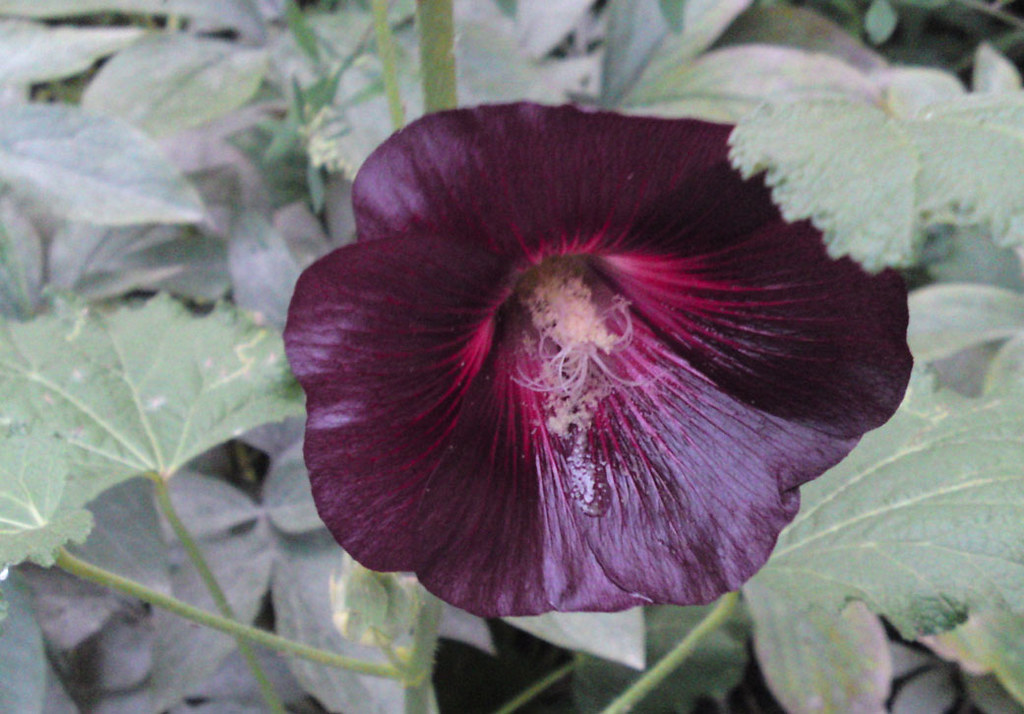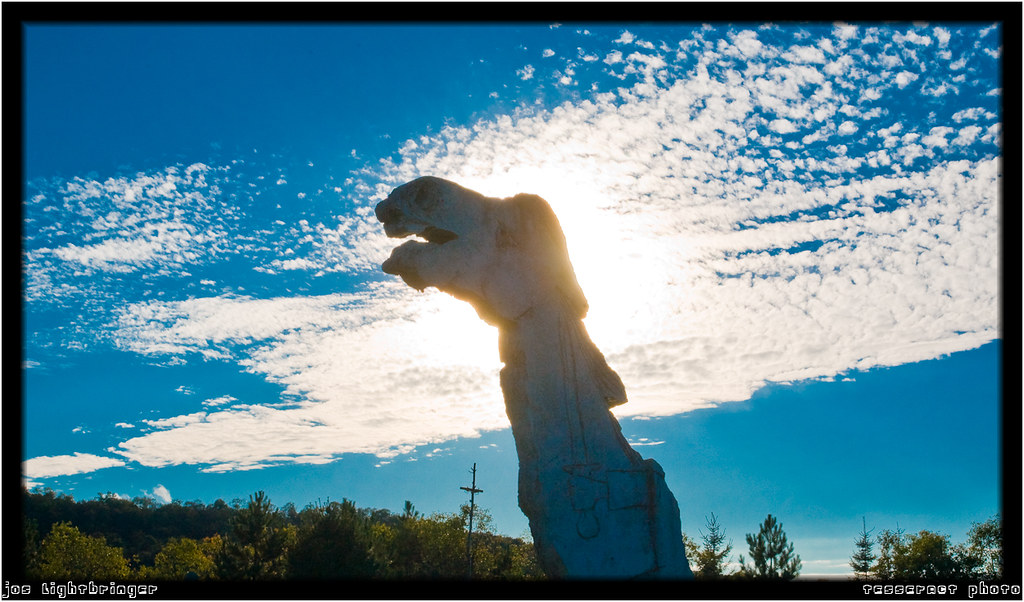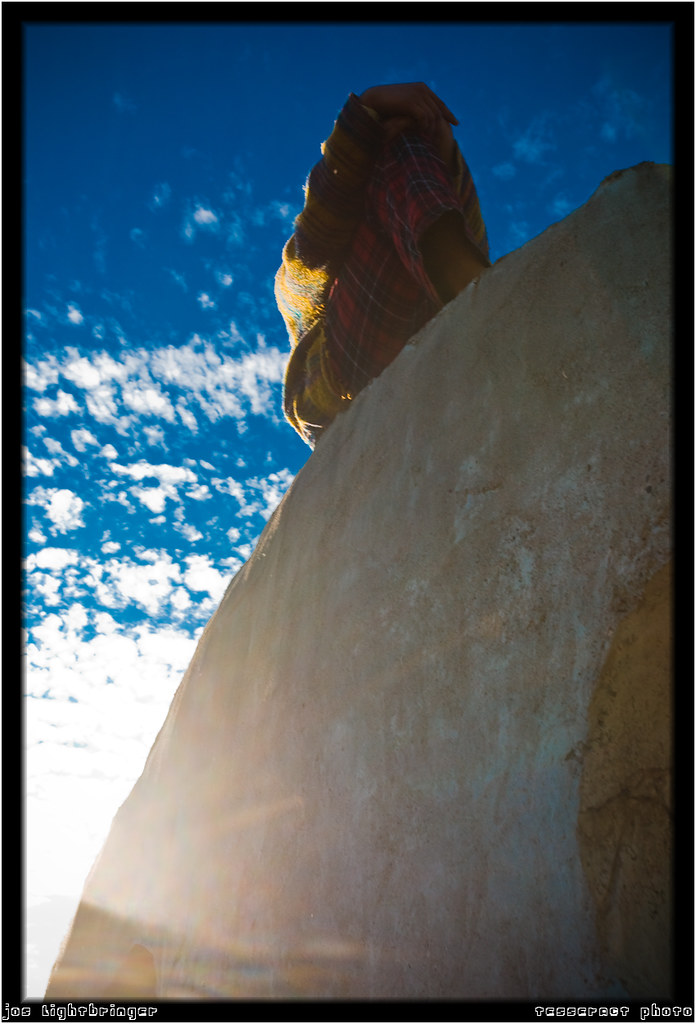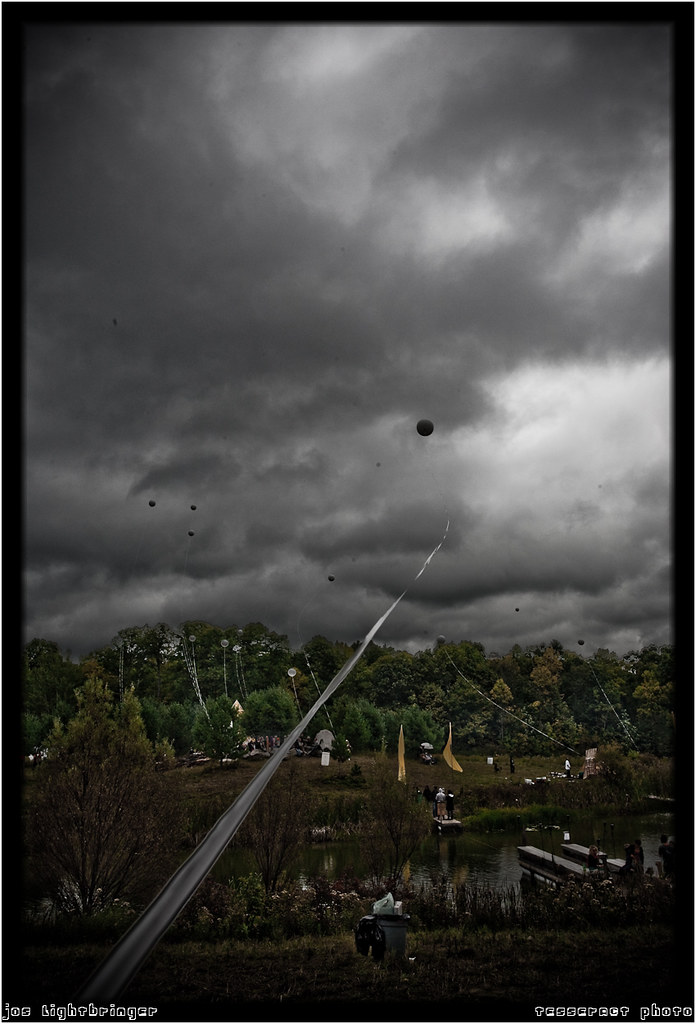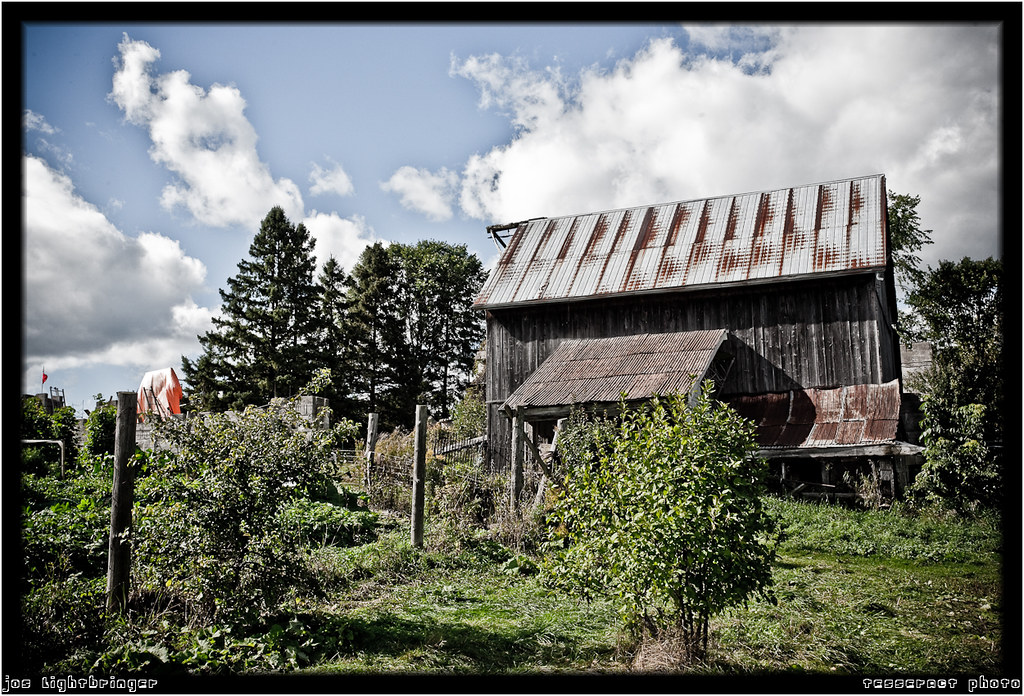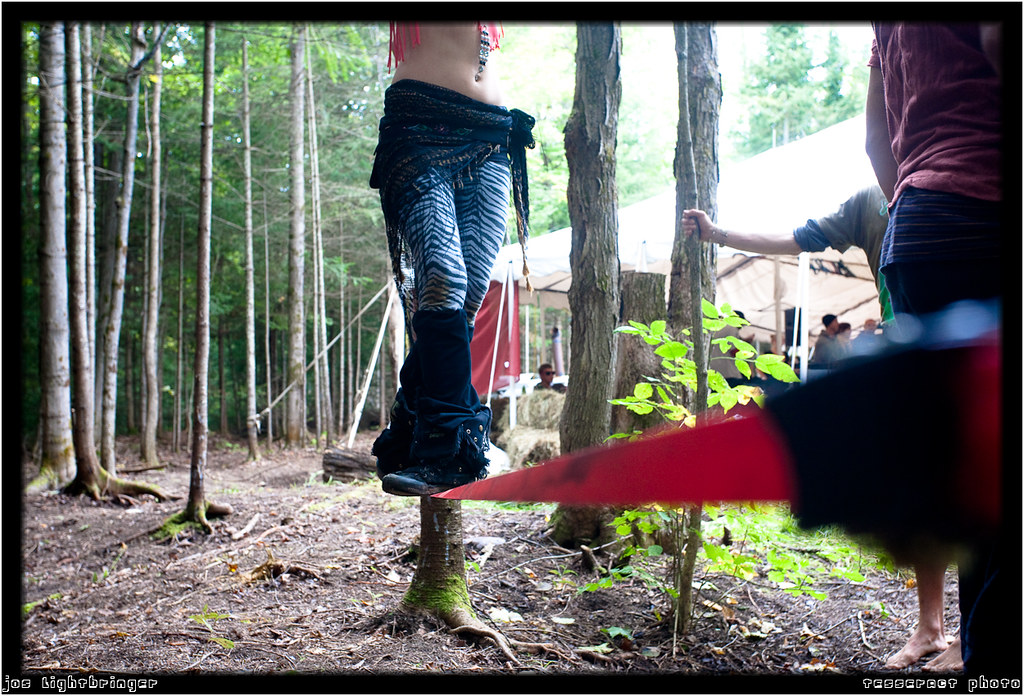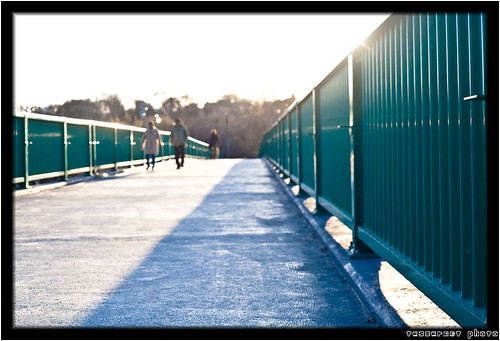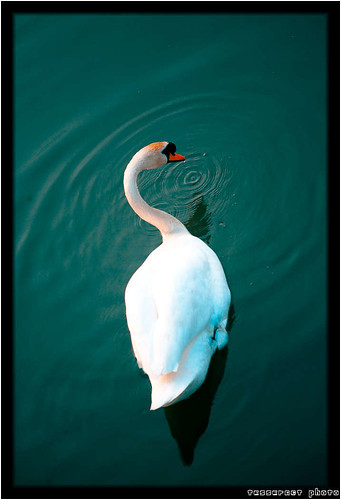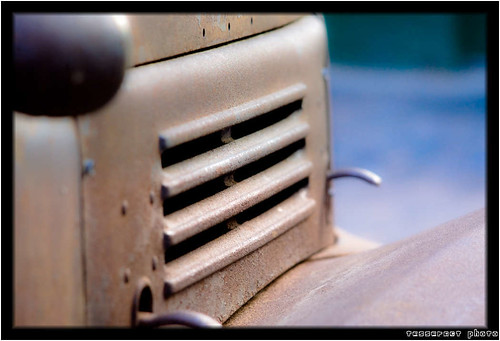EDITOR'S NOTE
A quick update to this FAQ and an answer to some unfair and uneducated comments that have been made on one particular forum.
1) The document was originally published in the Courier New font. The reason for my continued use of the courier new font is that it is a standardized monospaced font. This is important for text tables. Secondly, it is a serif font and so, the eyes are lead more easily by the font.
2) I chose a black background with white text because it is HIGHER contrast than black on white. Furthermore, a black background with white text makes a screen use less energy.
Suffice to say, the comments posted have largely been complaints for complaints sake. Nevertheless, the one complaint that is true is the font is too small, so I increased it.
What bothers me most is that I had to go digging for these complaints and they weren't made using the comment form at the bottom of the post. I don't want to say it, but to post comments about a webpage on another site is rather gutless and not helpful for improvement. I do have a certain style, but if it's not working for the end-user, then it would help me to be notified. USE THE COMMENT SECTION FOLKS!
Thank you, and enjoy the font size revised version of the FAQ below.
Happy Shooting!
---------------------------------------------------------------------------------------------------------
The following is Cees De Groot's Yashica SLR FAQ. I found it originally on his site, and it seems to have been archived elsewhere, but unfortunately it was all centered and hard to read. I cleaned it up slightly, so here it is!
Enjoy!
1. Introduction
1.1 Acknowledgements
1.2 Disclaimer, copyright
2. General information
2.1 What info about Yashica is available on the Web?
2.2 Should I buy Yashica?
2.3 The brand Yashica
2.4 Yashica and Contax
3. What Yashica 35mm SLR bodies are available?
3.1 FR series
3.1.1 FR-I
3.1.2 FR
3.1.3 FR-II
3.2 FX series
3.2.1 FX-D Quartz
3.2.2 FX-3, FX-3 Super, FX-3 Super 2000, FX-7
3.2.3 FX-1, FX-2
3.2.4 FX-103 Program
3.2.5 FX-D, FX-70
3.3 107MP, 108MP, 109MP
3.4 Dental Eye
4. What lenses are available?
4.1 What's the difference between Yashica DSB and Yashica ML lenses?
4.2 How about YUS lenses?
4.3 Known Yashica lenses.
4.4 Wide-angle
4.5 Normal
4.6 Moderate telephoto
4.7 Telephoto
4.8 Macro
4.9 Zoom
5. And what about accessories?
1. Introduction
Welcome to the Yashica SLR FAQ. This FAQ, a work in progress, is meant
to collect knowledge on the range of 35mm SLR cameras, lenses and
accessories made by Yashica. This is $Revision: 1.14 $ of the FAQ.
This FAQ is available on the World Wide Web, in several formats:
o HTML format <http://www.cdegroot.com/photo/yashica/yashica-slr-
faq.html>
o SGML format <http://www.cdegroot.com/photo/yashica/yashica-slr-
faq.sgml>
o plain text <http://www.cdegroot.com/photo/yashica/yashica-slr-
faq.txt>
o PostScript <http://www.cdegroot.com/photo/yashica/yashica-slr-
faq.ps>
If you have any problems, suggestions, or questions, please contact
the maintainer, Cees de Groot <mailto:cg@cdegroot.com>.
1.1. Acknowledgements
The only thing I knew about Yashica was that I own two bodies and a
handful of lenses. So this FAQ couldn't have been written with the
help of a number of net.users out there (even when my writing style
made it look like I know it all - don't let that fool you!). My thanks
go especially to Gary Schloss <mailto:schloss@datadepot.com> for a lot
of information especially on bodies, and to Marcus Hanke
<mailto:Marcus.Hanke@sbg.ac.at>, who single-handedly put together the
lens overview and the FX series stuff. Ezekiel Tan
<mailto:ztan@ihug.co.nz>, Berry de Bruijn
<mailto:berry.debruyn@mi.unimaas.nl> and Oliver Schmid
<mailto:Schmid@kwic.com> also provided me with very useful
information. David Foy <mailto:david.foy@shaw.wave.ca> gave me the
details on the Pentamatic, the first Yashica SLR (he's looking for
lenses and accessories).
If I forgot someone please yell.
1.2. Disclaimer, copyright
I've done everything in my power and limited time to make sure that
the information in this FAQ is correct. However, neither I nor any
contributors can be held responsible for the results of acting on this
information or for any damages resulting from using the information in
this document in any way.
Copyright (C)1997 by Cees A. de Groot. This document may be
distributed and reproduced without permission provided that it stays
intact, including this copyright notice.
2. General information
2.1. What info about Yashica is available on the Web?
Probably more than I'm aware of. Here's a list:
o I'm maintaining a mailing list, the Yashica/Contax SLR list. You
can subscribe to the list by sending a mail to
majordomo@evrl.xs4all.nl with in the body the line:
subscribe yashicacontax-slr
o I've also dedicated a part of my homepage
<http://www.cdegroot.com/photo/yashica> to the topic. Information
on the mailing list and the FAQ is over there and more might be
added in the future.
o On the Usenet, these newsgroups are relevant:
o rec.photo.equipment.35mm, about 35mm equipment in general. Lots of
this is of course about the big brands, but you'll find something
about Yashica as well, occasionally.
o rec.photo.marketplace, where buyers and sellers meet. Yashica stuff
is regularly offered over here.
o Information about the current line of Yashica SLR products can be
found on Yashica's corporate Website <http://www.yashica.com>.
o An awful lot of information on photography in general is available
from the mother of all photo FAQs, Guide to rec.photo
<http://www4.ncsu.edu/unity/users/j/jnweg/html/faq.html>. It is
especially important to consult this listing of pointers for
information on buying and selling via the newsgroups and by mail-
order before plunging into uncertain deals.
2.2. Should I buy Yashica?
As usual, it depends. I started with Yashica because I lend my fathers
camera and I didn't want to spend a whole lot on new equipment.
Actually, I did spend a whole lot on a Nikon camera a year ago, but I
found that autofocus didn't really work with me and that I couldn't
afford the Nikon glass I wanted anyway. So I sold that and bought a
lot of Yashica stuff for the money.
The great thing about Yashica is that it is completely underrated. The
market is so small and demand is so low, that prices are way below
what you pay for other brands, with comparable quality. Most people
are quite positive about the quality Yashica delivers (both mechanical
and optical).
The bad thing about Yashica is that the market is so small and supply
is so low, that it can be quite hard to find something you need. More
often than not, you are stuck with the option of forgoing a particular
accessory or buying something with Contax on it, which is a quite
expensive brand.
Mentioning Contax, that's the second great thing. The upgrade path is
unique. You start with a Yashica body and Yashica glass, then upgrade
to Carl Zeiss T* lenses, and finally upgrade to Contax bodies. In the
meantime, you have your old Yashica stuff as a backup system,
everything is completely interchangable.
2.3. The brand Yashica
Yashica has been around since 1957, and some old camera's, especially
the twin-reflex camera's for the medium format, are still quite
popular. In the seventies, Yashica licensed the Contax brand from Carl
Zeiss and started producing high-end camera bodies under that brand.
Since the early eighties, Yashica is a part of Kyocera, and fills in
the low half of the photo market for this corporation; Contax fills in
the upper half. Contax bodies are made probably by the Yashica
production facilities, Contax lenses are made by Carl Zeiss. For a
nice history of Carl Zeiss and the Contax brand see History Of
Contax/Carl Zeiss <http://www.contaxcameras.com/home/history.html>.
Yashica has been making 35mm cameras for a long time; the current line
started with the introduction in the 70's of the Yashica/Contax mount
(which we'll call the Y/C mount from now on) that is still in use.
Before switching to the Y/C bayonet mount, Yashica made a fairly
extensive line of screw-mount SLRs (TL Electro) with a full complement
of Yashinon interchangeable lenses. The screw-mounts were preceded by
the Yashica Pentamatic, which came out in the very early 60's and was
the first SLR by Yashica. It had a bayonet mount and was offered with
an Auto Yashinon 55/1.8 lens, plus 35mm, 100mm and tele lenses.
Furthermore, from early 60's and untill mid-80's Yashica designed and
manufactured an extensive and highly successful line of 35mm full-
frame (and half-frame?) rangefinders.
2.4. Yashica and Contax
Contax is, from a marketing point of view, an entirely different
brand. Manufacturing quality is better, too. However, rumours are
that lots of engineering is in fact shared between Contax and Yashica,
and lots of people combine the best value from both brands. I have a
page on Contax equipment as well, at
http://www.cdegroot.com/photo/contax.
3. What Yashica 35mm SLR bodies are available?
Most Yashica bodies are manual focus, except for the 200AF and 230AF
which come with a small range of lenses (and as they don't appear on
the Yashica corporate Website anymore, I take it they discontinued
it).
3.1. FR series
3.1.1. FR-I
I own an FR-I, so I'll start with that one first (it is also the most
versatile of the FR series, another reason to start with it). It's a
body with an electronic shutter and TTL metering put onto the market
together with the Contax RTS, with which it can share most accesories
(so go shopping and put a 5fps Professional Motor Drive and a 250
exposure back on it - can't do that with a Nikon N90x ;-)).
The FR-I is a very nice classic body, with an aperture-priority mode
and manual modes with shutter speeds from 1/1000th to 1 second and
bulb. Exposure compensation is possible +2 to -2 in full stops, film
sensitivity can be set from 12 to 3200 ASA. The front of the body
sports an X-sync socket, the self-timer and a depth-of-field preview
button. The rear has a button to activate the meter, which can be
locked by the film winding lever. Next to the meter is the socket for
the remote control cord. The 92% viewfinder shows diafragm, metered
shutter speed and a manual mode indicator. You can attach an FR (or
RTS) winder to the bottom and replace the back with a databack (or any
RTS back). At its time, it competed with classics like the Nikon EM,
Minolta XG-1 and Canon AV-1, and it compares very favourably with them
(more features, less money).
3.1.2. FR
The FR is basically the same box, but without the automatic (aperture
priority mode). It was introduced around '76 as the first of the FR
series and, apart from the fully manual operation it mainly differed
by the fact that it had a CdS-based metering system with LED
indicators.
3.1.3. FR-II
The FR-II is fully automatic, with auto, flash and bulb settings and
shutter speeds ranging from 4 to 1/1000th. The viewfinder only shows
time information (no aperture) and the X-sync socket is missing, too.
The FR-II is only available in chrome.
3.2. FX series
The FX series (at least the FX-D) was an offspring of the Contax 139
and was designated to replace the FR series.
3.2.1. FX-D Quartz
The FX-D Quartz is a scaled-down version of the Contax 139 with
reduced compatibility (though it can use the Contax 139 winder which
gives 2 fps). Compared to the FR-I, several advances were made:
exposure time measuring with quartz oscillator, a flash-ready function
and 1/100th flash sync, a larger time range in automatic mode (11 to
1/1000th), a vertical metal shutter, and auto-exposure lock. Apart
from this, it wasn't a lot better than the FR-I, on the contrary: the
material quality was inferior, and a lot of small features were
missing. The viewfinder didn't give aperture information, the x-sync
socket was gone, as was depth-of-field preview button. You couldn't
change backs, and exposure compensation was done by changing the ASA
setting (on the FR-I, the ASA setting is locked). The ASA range was
smaller, too: 25-1600 vs. 12-3200 on the FR).
In the beginning, Yashica didn't offer a special winder for the FX-D,
so you had to buy the expensive Contax 139 winder. Later on, Yashica
made this up with a dedicated FX winder which misses the vertical
release button featured on the Contax version. The body was available
in black, but a FX-D SE (special edition) was in chrome and sold as a
set with a zoom lens.
3.2.2. FX-3, FX-3 Super, FX-3 Super 2000, FX-7
A fully mechanical body with a simple metering system. I have never
seen a more basic body: you can set shutter time and film speed, there
is a button to switch on the TTL LED meter (which shows a plus, a
minus or a zero in the viewfinder to indicate its opinion of the
current settings), a film wind lever, the shutter release, a timer
lever, and a lens unlock button. That's all there is. Nice points:
it's very compact and light-weight, you have mirror lock-up with the
timer, and it doesn't need batteries to operate. And it does have all
the necessities of life: split-image focusing, hot shoe, a vertical
metallic shutter (so flash sync is at 1/125th), etcetera. I like this
box a lot.
The FX-3 Super is mostly the same as the FX-3, but activating the
meter is not via a separate button, but by pressing the shutter
release button lightly. That's generally a sound ergonomic
improvement, but especially left-eyed shooters will benefit from this.
The FX-3 Super 2000 has an added shutter speed of 1/2000th. Full specs
on the FX-3 Super 2000 are on Yashica's website under
http://www.yashica.com/yashica/slr/fx3super2000/fx3super2000.html.
Other differences: flash ready display in viewfinder and a built-in
hand grip.
Later, a version of the FX-3 called FX-7 was marketed. It is a chrome
body which was sold in a set with two DSB lenses and a hardbag.
3.2.3. FX-1, FX-2
Predecessors to the FX-3 were the FX-1 and the FX-2, which had an all-
metal construction. The FX-3 is mostly plastic.
The FX-2 has a fully mechanical shutter, needle-match metering,
horizontal cloth shutter (flash sync at 1/60), and DOF preview button
(missing from FX-3!). I'm not sure about split-image focusing. The
FX-1 is like FX-2, but it has an electronic shutter, so there is an
aperture priority AE mode in addition to manual. I've heard about a
battery problem with the FX-1 that would influence metering, but no
confirmations yet (with fresh batteries or after prolongued off-time,
the battery output voltage was reported to be too high).
3.2.4. FX-103 Program
The FX-103 Program was an addition to the FX series after the Contax
159MM had been released. More or less identical to the FX-D, it
featured TTL flash control and two program modes (a standard mode and
a high speed mode). Contrary to the 159MM, though, it did not made
special use of the MM lenses, which have special light aperture blades
made to be controlled by camera electronics. The Yashica Program
bodies (up to the current 109MP) are all the same in this respect and
therefore can use all Yashica and Zeiss lenses in program mode.
3.2.5. FX-D, FX-70
Some other bodies that were mentioned, more information on them is
welcome.
3.3. 107MP, 108MP, 109MP
The 109MP is a body with a built-in motorwinder. As full details can
be found on Yashica's website under
http://www.yashica.com/yashica/slr/109multi/109multi.html, I won't
repeat them here (as long as above link stays intact).
The next paragraphs are verbatim copies of mails I received on these
bodies. I'll edit them when I have time...
Marcus Hanke: Unfortunately the next Yashica SLR I have more detailed
informations about is the 109 Multi Program: Its aperture-priority
mode ranges from 16-1/2000 sec., flash sync 1/90, manual 1-1/2000
(strange, isn't it: the 1/1000 sec- FX-D had a flash sync faster than
the 1/2000-109!); again standard and HP-program mode (see FX-103); DX-
coding (no manual override possible); no real exposure compensation
(only a +1.5-button), AE-lock; viewfinder information: Only four LED-
symbols for over/under and correct exposure, flash; integrated winder
(1.3fps) with motorized film rewinding (the previous F-108 had manual
rewind), back interchangeable for databack.
Andrew: I now know something of that Yashica TR-7000 I mentioned to
you before... In desperation I called Yashica in New Jersey and
asked. The Camera is in fact the European version of the FX-107, and
it is very similiar to the Yashica FX-109MP. Based upon my
conversation with Yashica about the only difference I could determine
is that it has a NON-metered Manual mode in addition to the Program
mode. The lack of a manual light meter is in fact probably the reason
for it's early demise and subsequent replacement by the FX-109MP.
When you get around to upgrading the FAQ you may want to include some
of this info in it. I will also send off a slightly edited version
this E-mail to your Digest so others can read it.
Bob: I have a Yashica TR7000 and as far as I can tell, it's the same
camera as the MP107, and I may want to sell it (new condition) as I
don't use it. Mine came with a 50mm f2.0 lens.
The button near the shutter release is the self timer switch. The
camera has three program modes (normal, slow, and high speed) as well
as manual mode. In the manual mode, there is no metering. The button
on the side of the lens mount is for back light compensation. The
lens mount is metal while a lot of the body is plastic.
It's very similar to the MP109, but the film rewind is manual instead
of motorized. A manual is available from John Craig.
Andrew: Copied and Edited From the Yashica 1996 Catalogue
108 Multi-Program, Motor-Driven SLR, Multi-mode LED display - DX film
setting (ISO 25-3200) Normal program mode, high speed program mode,
aperture priority AE mode, manual exposure mode, manual flash mode CPU
controlled timing precision with a maximum 1/2000 sec. shutter speed.
Built-in auto-winding with auto load/automatic film advancing to the
first frame. Exposure compensation for back-fit subjects.
109 Multi-Program, Motor-Driven SLR, Multi-mode LED display - DX film
setting (ISO 25-3200) Normal program mode, high speed program mode,
aperture priority AE mode, manual exposure mode, manual flash mode
Automatic film rewind CPU controlled timing precision with a maximum
1/2000 sec. shutter speed. Built-in auto- winding with auto
load/automatic film advancing to the first frame Exposure compensation
for back-lit subjects.
Lenses Currently Available (As of 1996)
MC 75- 200mm Macro
MC 28-80mm
MC 35-70mm
ML 50mm 1.9 Lens
FX Series Case
Case for 108 & 107
Case for 109
CS-15 Electronic Flash,
CS-140 Flash
CS-220 Auto Flash
Neal Zondlo: I have a Yashica 108MP, and can tell you that there is
really only 1 difference as far as I can tell between the 108MP I have
and the description of the 109MP on the Yashica website. Whereas the
109MP has motorized film rewind, the 108MP has a crank for manual film
rewind. Everything else (1/90 flash sync, manual 1 - 1/2000 s
exposure, +1.5 EV backlight compensation, auto 16s - 1/2000 s
exposure, bulb, 1/90, aperture-priority, program and high-speed
program exposure modes, motorized film advance, hot shoe, electronic
cable release attachment, auto DX sensing ISO 25-3200 in full stop
increments, 10s self-timer, TTL metering light display) seems
identical between their description of the MP109 and the reality of my
MP108.
3.4. Dental Eye
For some reason, Yashica has a system consisting of what looks like a
modified 109MP body, a macro lens and a ring flash especially for
medical use. It's horrendously expensive, like everything made for
dentists. The current version is documented on Yashica's website under
http://www.yashica.com/yashica/dental.
4. What lenses are available?
Yashica shares its mount with Contax, which means that you can use
Contax Zeiss T* lenses, which are rated most of the time somewhere
between Nikon and Leica (or above Leica). Furthermore, most
aftermarket brands support the Y/C mount so you can add Tamron,
Tokina, Vivitar and Sigma lenses to your system. I've seen lots of
lenses by Sun, a now-gone aftermarket producer; my Sun 135/2.5MC seems
to perform well. The Big Four aftermarket brands are in various states
of ending their MF offerings, inform for yourself.
This FAQ will only discuss Yashica lenses.
4.1. What's the difference between Yashica DSB and Yashica ML lenses?
Yashica DSB lenses are single coated, ML lenses are multi coated (ML
stands for Multi Layer). As usual, a marketing department messed
things thoroughly up by introducing another designator, MC for Multi
Coated, for later multi coated lenses. Contrary to the quality jump
from DSB to ML, there is no distinguishable quality difference between
ML and MC lenses. For quite some time, Yashica offered both DSB and ML
lenses; later on, DSB lenses were sold in package deals with bodies
(like the FX-D Quartz SE and the FX-7).
4.2. How about YUS lenses?
YUS stands for Yashica US. This "brand" is now gone, and from
comparisons it seems that they were the same as the DSB lenses sold
elsewhere.
4.3. Known Yashica lenses.
The following is a list of lenses we know off. If I have performance
data, I'll give them a note, ranging from 1 (``this really is a Sigma
lens in disguise'') to 3 (``average Yashica stuff'') to 5 (``why
didn't they stamp Carl Zeiss T* on this one?''). Completely
subjective, of course, give feedback if you disagree and give notes
where I didn't do it. Don't forget that this notes are not necessarily
my own opinion - a lot of it is based on hearsay (especially when I
don't own the lenses myself :-)).
In order to save space, I skimped on the table headers. Here is an
explanation:
Desc
Description: focal length/largest aperture/coating.
L-G
Lenses/groups.
Amin
Smallest aperture.
Dmin
Shortest focusing distance (m).
Filt
Filter thread diameter (mm).
Size
Phyiscal size: diameter x length.
Wght
Weight (g).
Q Subjective quality assessment.
Cmt
Comments, numbers refer to list below table.
Note that Yashica designates their stuff as ``ML 2,0/50'', whereas I
use ``50/2,0ML''. I think this makes it easier to quickly find a lens
you are looking for.
4.4. Wide-angle
Desc L-G Amin Dmin Filt Size Wght Q Cmt
15/2.8ML 10/7 16 0.3 - 75x70.5 445 4 1
21/3.5ML 12/8 16 0.3 72 75x54 370 4 2
24/2.8ML 9/8 16 0.3 62 65x48.5 285 4
28/2.8DSB 6/6 16 0.3 52 61x42.5 240 2
28/2.8YUS ? 22 0.35 55 63.5x44 260
28/2.8ML 7/6 16 0.3 52 61.5x41.5 250 3
35/2.8ML 6/5 16 0.3 52 61.5x41.5 230
1. Fisheye lens with 170 degrees angle of view. Built-in filters
(skylight, yellow, orange). Good quality.
2. Renowned for its quality.
3. Still available.
4.5. Normal
Desc L-G Amin Dmin Filt Size Wght Q Cmt
50/1.9DSB 6/4 16 0.5 52 62x40 215
50/2.0ML 6/4 16 0.5 52 61x32 140 3 1
50/1.9ML 6/5 16 0.5 52 61x32 145 4
50/1.7ML 6/5 16 0.5 52 61.5x40 240 4 2
50/1.4ML 7/6 16 0.5 52 61.5x42 295 ? 3
55/2.0DSB 6/4 16 0.5 52 63x39.5 200
55/1.2ML 7/6 16 0.5 55 66.5x50 410
1. I have one to go with my FX-3, which makes up for a very nice and
lightweight system. I use it near swimming pools, on the beach, and
other places where I don't want to lug around (and put at risk) my
``real'' gear.
2. I had to take it apart in order to clean the aperture blades (the
blades stuck because some grease had gotten onto them). This
inside look left me with a good impression of the lens innards - I
couldn't discover any significant parts in plastic, everything was
metal and looked well-built. I can't complain about its sharpness,
I think it is a very fine lens.
3. Some say tests shown much worse performance than the Zeiss 50/1.4,
others say it was almost as good. In any case, this is quite an
expensive piece of glass, almost as expensive as the Zeiss version
- I'd opt for the latter if I was going to spend a lot of money on
a 50mm...
4. Still available.
4.6. Moderate telephoto
A warning about telephotos: Yashica came with better designs for the
135, 200 and 300 lenses (less weight, more compact, better optical
quality) relatively quick after the introduction of the original
lenses. As long as both variants were available, the newer ones were
marked with a C (for compact). However, as soon as the old lenses were
sold out, they dropped the C. Therefore, when buying a telephoto
without the C, you either have a very old one or a recent one (and you
really want the latter). The best advise is to use this list and check
the measurements when buying second-hand telephotos.
Desc L-G Amin Dmin Filt Size Wght Q Cmt
135/2.8DSB 5/4 22 1.8 55 64x72 420 2
135/2.8ML 5/4 22 1.5 55 65.5x92.5 540 1
135/2.8MLC 5/4 22 1.5 52 63x75 420 2
1. Old version.
2. New compact version.
4.7. Telephoto
See the warning about design enhancements in the previous section.
Desc L-G Amin Dmin Filt Size Wght Q Cmt
200/4.0ML 5/4 22 2.5 55 62x150 615 1
200/4.0MLC 5/4 22 2.5 58 64x113.5 535 4 2,3
300/5.6ML 5/4 22 4.5 ? 65x210 880 1,4
300/5.6MLC 6/3 22 4.5 58 66x148 645 4 2,5
500/8.0 6/5 - 4 - 88x120.5 865 1,4,6,7,8
500/8.0ML 8/6 - 2.5 - 78x87.5 470 2,5,6,7,9
1000/11.0 6/5 - 8 - 118x220 2330 4,6,8,10
1. Old version.
2. New compact version.
3. A nice piece of glass. It's not very big, it feels rugged, and I
think the lens is quite sharp. I've made great hand-held shots
wide-open, which look tack sharp on Delta100 and 8x10 prints and
show a very pleasing ``bokeh'' (bokeh is how the out-of-focus stuff
looks like, in short). As usual, it is dead cheap. I love it.
4. Tripod collar.
5. Lacks tripod collar.
6. Mirror reflex.
7. Slide-in filters.
8. Single coated.
9. Still available.
10.
Filters built-in in revolver grip.
4.8. Macro
Desc L-G Amin Dmin Filt Size Wght Q Cmt
55/4.0ML 4/3 22 0.25 52 61.5x55 305 1
55/2.8ML 6/4 22 0.25 52 61.5x56.5 305 4 1,2
100/3.5ML 6/4 22 0.44 55 67x77 430 4 3
100/4.0ML 5/3 22 0.147 35.5 94.5x155.5 1000 4
100/4.0MLB 5/3 32 ? 52 60x32 190 4
1. Ratio 1:2, with 27mm extension tube 1:1.
2. Better correction for infinity than the f/4.0 version.
3. Ratio 1:2, with 27+20mm extension tube 1:1. Hard-to-find, very good
quality lens.
4. This is the ``Medical'' macro (now called ``Dental Eye''). In
current versions, it has been permanently integrated with the body
but older versions had a standard Y/C coupling. It has a built-in
ringflash (GN 5.6m) and a composing lamp. Maximal focusing distance
1.5m. Flash and aperture are coupled to the repro ratio which is
1:1 with 2:1 with an extra add-on lens. A number of options are
available, like a foot switch, a mains adapter and a reflector set.
5. ``Bellows''. Can only used with bellows, ratio 1.4:1.
4.9. Zoom
Desc L-G Amin Dmin Filt Size Wght Q Cmt
28-80/3.9-4.9MC 13/9 22 0.5 58 75x87.5 550 1,6,7
28-50/3.5ML 10/8 22 1 72 75x74.5 475 2
35-70/3.5ML 8/8 22 1 62 69x79 475 1
35-70/4.0ML 7/7 22 0.6 55 67x71 390 2
35-70/3.5-4.5MC 11/8 22 0.5 58 69.5x63.5 330 1,5
35-105/3.5-4.5ML 15/11 22 1.5 55 65x84.5 470 1
35-105/3.8-4.8DSB 15/14 22 1.4 55 64.5x82.5 460 9
38-90/3.5DSB 12/11 22 1.5 67 70x110.5 685 1,3
42-75/3.5-4.5ML 7/7 22 1.2 55 61x57 315 2 1,4
70-210/4.0DSB 14/10 22 2.5 58 65x165 690 2
75-150/4.0ML 12/9 22 1.5 52 63.5x115.5 485 1
70-210/4.5ML 12/9 22 1.5 55 65x128.5 525 4 5
75-200/4.5MC 13/9 22 1.2 55 73x79 420 1,6,7
80-200/4.0ML 12/9 22 1.9 55 65x133 610 4 1
100-300/5.6ML 13/10 32 1.5 58 68.5x192.5 850 4 1
1. 1-ring zoom.
2. 2-ring zoom.
3. Ratio 1:4 in macro setting with a minimal focusing distance of
0.3m.
4. Mostly sold as a set (FX-D Zoom, FX-7 Zoom).
5. Successor of the 80-200/4.0 zoom. According to Fotomagazin almost
as good as the Zeiss 70-210/3.5. A very compact zoom with macro
setting. Ratio 1:4 in macro setting with a minimal focusing
distance of 1.1m.
6. Currently available.
7. Ratio 1:4 in macro setting
8. Ratio 1:4.7 in macro setting.
9. Minimum distance 0.7 in macro setting.
5. And what about accessories?
To be setup. Could probably mention the components of the Yashica
Dental system, remote control cords, flashes, teleconverters,
extension rings, etcetera. Any information is welcome.
Macro extension rings
I recently acquired a set of macro extension rings, 13mm, 20mm
and 27mm for around US$55. Still have to see how my normal
primes perform with them. They look well-built and that's all
there is to say about extension rings.
FR Winder
Winder that fits all FR bodies. Does 2 frames per second, has a
couple of connectors (one looks like an external power connector
and one like a remote control connector), and eats 6 AA
batteries. A big disadvantage is that your tripod screw
location moves way left (as usual with these battery packs). If
2fps is too slow for you, go shop for the Contax RTS motordrive.
With the winder, your FR-I will weigh 1090g (1340g with a
50/1.7) and gets a serious, professional look (people with Nikon
F50's and an aftermarket zoom will feel very uneasy with you in
the neighbourhood ;-)). It saved me from abandoning the FR-I
because I'm a left-eye photographer and thus can't operate the
film wind lever and keep composing at the same time. I still
should train myself to switch to the right eye, though.
--
Cees de Groot http://www.cdegroot.com <cg@cdegroot.com>
Yashica/Contax SLR List: http://www.cdegroot.com/photo/yashica
GnuPG 1024D/E0989E8B 0016 F679 F38D 5946 4ECD 1986 F303 937F E098 9E8B
Send corrections/additions to the FAQ Maintainer:
cg@evrl.xs4all.nl (Cees de Groot)


